Home » Flooring
Category Archives: Flooring
Choosing To Hire Carpet Flooring Cleaning Professionals
Should I Buy New Carpet or Have My Old Carpets Cleaned?
When your carpets are starting to look like they have seen better days, you may be wondering if it is time to get new ones or if you should try to salvage the ones you currently have. It is always cheaper to repair rather than replace, but there will be some instances in which buying new carpets is necessary. A general rule is to replace your carpets when they currently pose health risks like harboring mold or allergens. If your carpets have just a few stains, however, you can likely get professional cleaning help to restore them to their original glory.
Here are some ways to decide if you should replace your carpet or save hundreds and have it cleaned.
Matted Carpet
A sure way to tell if you need new carpet is if the high traffic areas are matted down. If your carpet is made of Polyester or Polyester blends then matting is a sure sign of needing replacement. Once Polyester fibers lose their tuft or shape there is nothing that can be done to revive them. If you have carpet made of a higher quality fiber such as nylon it may be possible to revive it with a professional cleaning. Nylon is one of the most resilient and easiest carpet fibers to revive with a professional cleaning.
Berber Carpet
Carpets made of Olefin fibers have a shorter life span than other berber carpets. Olefin tends to be an oily fiber that attracts dirt and stains after time. When the fibers in Olefin berber carpets begin to matt and lay down it is hard to revive them. The life expectancy of an Olefin berber carpet is around three years, so if your Olefin carpet is looking dingy and matted it may be best to begin looking for a replacement.
Again nylon is a much more resilient fiber and nylon berber carpets will last a lot longer than other berbers. Nylon is more expensive but you get what you pay for. The average life of nylon berber is 10 years. A nylon berber carpet is more than likely able to be restored to like new with a deep professional cleaning.
Permanent Stains
No carpet is safe from the potential of permanent stains; there are however a number of ways to care for carpet to prevent stains from becoming permanent. Many carpets sold today come with some sort of stain resistant coating the most popular being Scotchgard. Scotchgard does wear off over time and can be reapplied by a professional carpet cleaner. If you have a stain master carpet the stain fighting is part of the fiber and there is no need to reapply.
Even with a great stain coating on your carpet it is possible to stain the carpet permanently with certain substances. If you have some ugly stains hanging on to your carpet fibers it is a good idea to call a carpet cleaning professional and ask their advice on weather the stain is removable. Some carpets are beyond hope and better off being replaced.
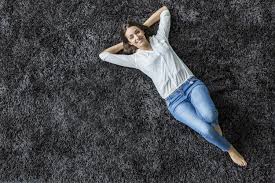
When do I need to buy new carpets?
If your carpets have incredibly stubborn stains that don’t respond to professional cleanings, then you will likely need to replace them. Also, if they harbor allergens or other health hazards, you should also remove them. Here are some instances in which buying new carpets is almost always necessary:
- Your carpets have recently been damaged by a flood
- There is mold in your carpets
- Your carpets are stained with biohazards like waste
- The stains won’t come out even after a professional cleaning
In addition, you should replace your carpets with high-quality carpets that are stain-resistant. This precaution ensures that future stains won’t force you to spend a lot of money on new carpets.
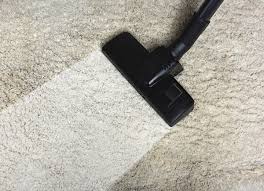
Why should you replace your old carpet?
Regardless of how durable the material used to make your carpet and padding is, you can expect it to reach its lifespan at one point in time. If you notice any of the following on your old carpet, then, it’s time to invest in a new floor covering:
1. Matting
When matting begins to occur more frequently on the sections of your carpet that experience the most foot traffic, it’s time to replace your old carpet with a new one. Even a professional clean up job can’t do much to reverse the unsightly look of a pile that stays matted down.
2. Staining
An old carpet most likely has collected old stains during the course of its use. Over time, even hiding the stains using area rugs and furniture becomes tiring and- perhaps- detrimental to your interior décor. This leaves you with no option but to replace the old, stained carpet.
Even for carpets with anti-stain coating, the sealant wears out over the years, leaving the old carpet vulnerable to tough stains. The types of stubborn stains that you’re likely to come across on your old carpet include protein-based stains, tannin stains, dye stains, and oil-based stains.
3. Wear and Tear of Carpet Padding
Have you noticed that your carpet is bunching up or wrinkling at certain spots? Or maybe, it produces a weird sound when you step on some spots. Both of these are pointers towards an old carpet with worn-out padding/underlay.
With constant foot traffic, your carpet padding is bound to get worn out at some point in time, and you’ll need to replace the carpet if you wish to continue enjoying the extra cushioning and comfort that comes with a fully-padded floor covering.
4. Bad Odor
Sometimes, the bad smell coming from your carpet just won’t go away, even after multiple treatments. This could be due to beverage spills and pet stains seeping deep into the fibers of the carpet- over the years.
Sometimes, the stains and the accompanying smells find their way into the carpet’s padding/underlay, making it really difficult to de-stain or deodorize. If this is the case, you might want to consider replacing your old, smelly carpet.
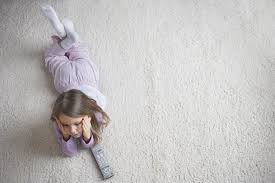
What is the lifespan of carpet
The Longevity of Your Household Carpet
Carpet Lifespan isn’t a cut and dry number. There are several factors that can effect how long your carpet lasts, whether it’s where you live, who you live with, or what you do in your home. But even carpet under the most trying of conditions can last many years, with the right carpet maintenance.
In the average household of about 2-4 residents, carpet lifespan is usually about 3-5 years. It is by this point that most carpet fibers become old and frayed. Stains will also have sunk in, turning what started out as a pure white carpet into something graying and dull. This is why apartment owners and most homeowners change out their carpets every 3-5 years, due to discomfort and degrading visual quality of the current carpet.
If there are children or pets living in the household with the carpet, this number can go even lower. Children and animals both are known for the stains they cause, and animals especially can fray and tear up the carpet they take residence on with their claws. So if you’re living in a home with either children or animals, then proper carpet care is even more essential.
Proper carpet care changes everything though. As mentioned, with proper carpet maintenance, many years can be added to the average carpet lifespan, and some households can even keep their carpet for a decade before replacing their carpet flooring. Vacuuming is a necessity, with low traffic areas like a bathroom or closet needing to be vacuumed every 2-3 days; for the greatest longevity for your carpets, high traffic areas like hallways or living rooms should be vacuumed daily.
For treatment of stains, the rule of thumb is the faster the better. Most carpets nowadays have been treated to resist stains better, and show them more clearly so as to make them easier to spot and clean up. However, even with new stain treatments you have to work fast, because the longer a stain sits, the more permanent damage is caused to your carpet. Dab the stain with a white cloth or towel, and then look up proper treatment for the specific stain–Remember, each are different!
How to replace an old carpet with a new one
Follow the procedure below to ensure you properly replace your old carpeting with a new one:
1. Establish how much carpet you’ll need
Before purchasing your new carpet, you need to determine how large the carpeted area is and note down the measurements. For wall-to-wall carpets, simply measure the width and length of the room.
2. Remove the old carpeting and padding
Next, take out the existing carpeting by detaching it from the tack strip. Once done, repeat the process to remove the carpet padding. Remember to wear the appropriate protective gear for this step, including hand gloves.
3. Prep the floor
Before laying down the new carpeting, prep the floor by cleaning it to remove any old stains and pet urine that could have seeped through the old carpet. You can clean the floor by using a broom and a vacuum cleaner. If there are tough stains on the floor, you can use a detergent solution to mop the floor clean, or use a power washer.
4. Install Tackless Strips and Carpet Padding
After cleaning the floor, you should lay the carpet padding. This can be preceded by nailing in new tackless strips if the old ones were damaged during carpet removal. When laying the padding, check to ensure that it doesn’t overlap.
5. Lay the carpet
Finish off the process by installing the new carpeting. While doing so, check to ensure that you’ve properly stretched the carpet onto the strips.
The Great Hardwood Flooring Or Carpet Debate
How to Maintain Wood Floors
Now that you have beautiful wood floors, you want to keep them in tip-top shape. Whether your wood floors are solid, engineered, or reclaimed wood, the general upkeep routine should be the same. Luckily, the regimen isn’t too rigorous. In fact, simple cleaning is the main ingredient for longevity of wood floors. But there are still nuances that are pivotal for maintenance, which is why we called on the experts.
Vacuum Regularly
Keeping debris off the floor is key. “If there’s a piece of debris on a wood floor and you walk across, it’s like sandpaper on the bottom of your shoe. It can ruin or scratch that surface.” All you need to do is sweep daily, if possible, and regularly vacuum with the hard floor setting, which turns off the brush roll to avoid scratching, or the flat attachment that will protect the floor from bristles. Strong suction is extra useful to pull up dust and debris in cracks and crevices and between planks.
Identify the Right Cleaning Product
When it comes to choosing a product for a deeper clean, there isn’t a hard-and-fast rule. Different finishes require different treatments, so all three experts suggest listening to the product recommendation of your flooring or finish manufacturer.
However, it is safe to say there are products to always avoid. “I don’t recommend any kind of harsh chemical to clean any hardwood floor. “Chemicals applied to the finish will create hazing. This can really build up over a period of six months to a year and doesn’t look very good, “You don’t want to use anything that says it’s going to polish or shine or rejuvenate or revitalize the wood floor. That’s basically telling you that you’re laying out something that’s a supplemental product. It’s putting something on that surface that’ll make it pretty for a short period of time, but it’s not designed to wear.”
Keep Them (Pretty) Dry
Once you’ve found the right cleaning product, use it on the floors with a damp mop. “You don’t want to bring out a wet bucket and start soaking the floors because that’ll cause the wood to swell,” says Brett. He also advises against using steam, which cleans well but allows vapor to enter small spaces and damage the floors.
Know the Warning Signs
Wood reacts dramatically to temperature and humidity, so it’s important to understand the environment that surrounds your floor. Sometimes, though, elements are out of your control, so being aware of red flags can save your wood floors. The nice thing about wood is that it’s a natural product, so it’ll tell you if it’s not happy.
If there’s too much moisture on, around, or below the wood, it will cup. Eliminate the source of the water to stop this from occurring. Exceedingly dry conditions induce gapping, cracking, and splitting. Here, a humidifier should do the trick. “Adding a little moisture to the air will allow your floor to settle back down. It’ll make it happy again.
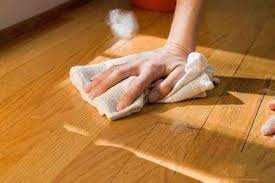
Get in a Routine
Cleaning your hardwood floor isn’t a one-and-done deal. From rain, mud, snow and salt to leaves, dirt and more, seasonal changes come with a variety of factors that can dull your hardwood floor. It takes just a little effort to maintain hardwood floors and keep them looking great, starting with getting into a cleaning and maintenance routine. Follow a schedule and stick to it.
Dust Daily
This is one of the most underestimated and easy steps in the process. Dust daily to keep dust and dirt off the floor. This will prevent scratches and extend the beauty and life of your floor. Daily dust mopping will significantly reduce allergens in the home. More effective than traditional methods, a microfiber material uses a static charge to attract more dust and allergens. These smaller fibers reach into floor pores to lift dirt more effectively.
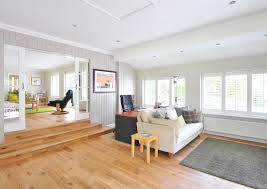
Polish Quarterly
Polishing helps to extend the life of your hardwood floors and adds shine. Before polishing, dust or sweep the floor to remove loose debris. You may also want to follow up with vacuuming to make sure you pick up all the dirt and dust. Use water-based polishes to restore luster and shine every two to three months. These polishes won’t leave a residue or emit harmful toxins, but they will prevent overcleaning and stripping of your floor. Durable, urethane-based polishes have fast dry times, no waxy buildup and a protective wear layer to fill in micro-scratches and even out the appearance of the floor.
Shop Floor Polish
Refinishing
Refinishing hardwood flooring restores the wood to its original shine and appearance. Refinishing depends somewhat on the age of the floor and the thickness. For hardwoods that are only 1/4-inch thick, refinishing could do more harm than good by stripping away the entire floor. Generally speaking, refinishing only needs to be done once every seven to 10 years.
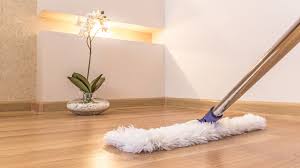
Additional Tips
- Regularly dust and clean your hardwood floor to keep it looking like new.
- Avoid using water and vinegar, soap-based cleaners, wax or steam cleaners on your hardwood floor. Over time, vinegar and water will dull the floor’s finish, while soap or wax will leave a residue. Steam cleaners put heat and excessive water on your floor, which can lead to cupping and long-term damage.
- Use a natural, rubber rug underlayment with a waffle pattern in entryways or high-traffic areas.
- Felt floor protectors for furniture and chair leg pads help cut down on scrapes and scuffs in the wood.
- Avoid wearing high heels, which can cause scratches or gouges in hardwood.
- Use the proper tools to clean your floor: a mop paired with a machine-washable microfiber pad for dusting and cleaning. Avoid string mops — these put excessive amounts of water on the floor, which can be damaging, and just push dirt around instead of picking it up and removing it.
- Wipe up all spills immediately to avoid permanent stains.
How to Clean Cork Floors
Cork floors have become popular as homeowners look for earth-friendly materials from sustainable sources. It’s a durable material, as tough as hardwood and laminate, but like all floors requires periodic cleaning and sealing. Here’s how to clean cork floors.
Sweep or vacuum your floor daily. Dirt and debris can scratch the floor. Use a brush attachment, not a beater bar attachment, as it can damage the finish. Clean up spills immediately, as cork is porous and will soak up liquids quickly, staining the surface. Once a week, mix a mild cleaning solution of 5 drops of liquid dish detergent and one gallon of warm water. Don’t use a stronger solution as it can cause streaking. Avoid ammonia-based products or abrasive cleaners.
Use a soft mop, not hard bristle brushes or scrubbers, to spread the cleaner. Wring out the mop after each dip in the water. Too much water can damage the floor by seeping between the tiles and making the tiles swell. When they dry, they may separate and leave gaps between the tiles. Excess water can also encourage mold to grow. You want a damp mop, not a wet one.
Don’t use a steam cleaner as it can put too much water on the floor and ruin the finish. For stubborn stains, scrub with a fine grain steel wood pad. Remember, the most import part of knowing how to clean a cork floor is not using too much water.
What Are The Benefits Of Carpet Flooring
How To Choose The Right Carpet Type For Your Home
Carpet types may look very similar, but understanding the differences will help you make the right choice for your home. To make your selection process a little easier, we’ve put together our ultimate guide to carpet types.
Wool carpet is warm, luxurious and has a long-lasting beauty that will stand the test of time. It is naturally stain resistant and has significantly better soil release than any other fibre – but you’ll need to make sure you clean up spills quickly.
Nylon is the most popular carpet in Australian homes. Ultra soft, durable and stain resistant, it’s ideal for high-traffic areas, families or pets. It’s also a cheaper alternative to traditional wool.
Solution Dyed Nylon (SDN) is the next generation of nylon carpet. It has colour added to the fibre during the production process, rather than applied to the surface afterwards, making it colourfast against cleaning and sunlight.
Polypropylene is a synthetic fibre that is a great option if you’re working to a budget. Anti-static plus fade and stain resistant, it is often used in rental properties, garages and playrooms.
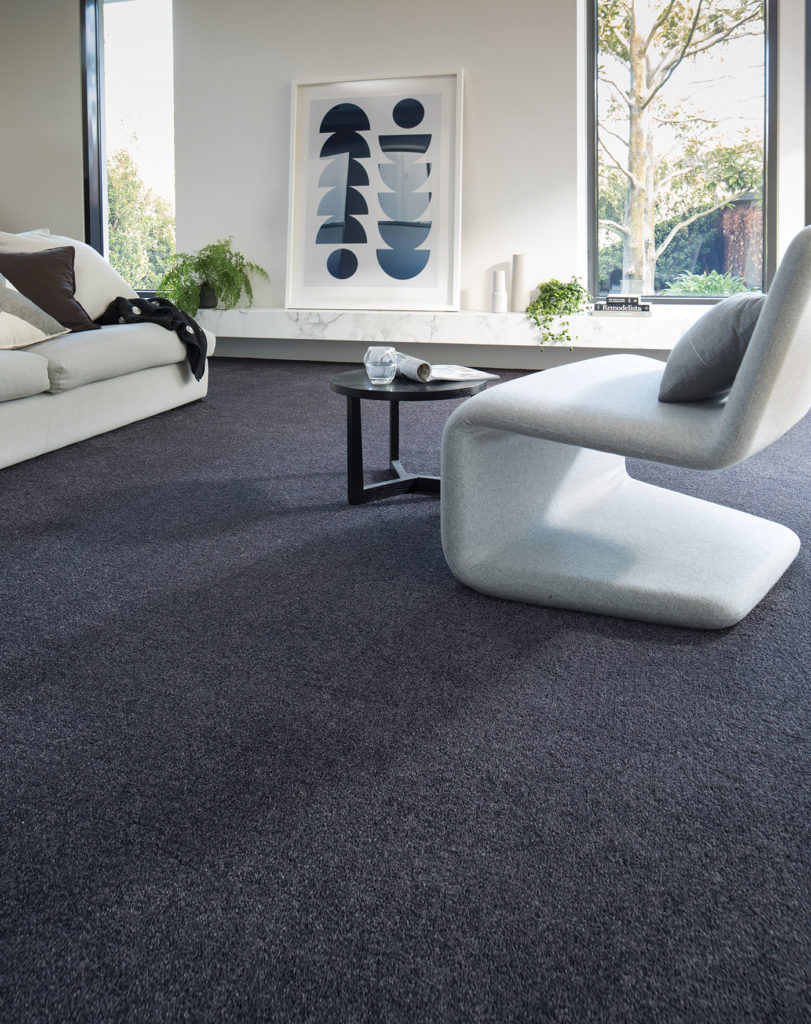
How to Choose a Carpet that is Beautiful & Durable
Flooring can add beauty and style to your home. From beautiful, natural hardwood to soft luxurious carpet, a floor provides the backdrop for the rest of your room. You floor also gets a lot of wear and tear. Pets, guests, family, kids – your carpet literally gets walked all over every day. Choosing a floor that can take the abuse is important in having the beautiful backdrop that lets your home shine. When you’re choosing a floor, arm yourself with this information and you won’t be disappointed with the beautiful floors you’ll have for many years to come.
NYLON
Durable, versatile, wear-resistant and easy to clean, nylon is a great fiber choice for all areas of the home. Nylon is also soft to the touch and some new nylon yarns can be exceptionally soft. Nylon is not inherently stain-resistant, however, most nylon carpets are treated to protect against spills and stains
POLYESTER
Exceptionally soft, polyester also has natural stain resistant qualities. Polyester is not as resilient as nylon but thanks to advancements in yarn processing, polyester carpets now perform much better than older polyester carpets.
POLYPROPYLEN (OLEFIN)
Polypropylene, while not as resilient as nylon or polyester will not absorb water making it more stain and fade resistant. Polypropylene is usually found in loop pile carpets where the lack of resiliency is not an issue.
BERBER
Berber is a looped carpet tufted with thick yarn. It often has random specks of color in contrast to a base hue. It is great for any areas that must endure lots of traffic, such and entryways and hallways. This floor covering has a rich, textured feel, while maintaining an informal, casual look.
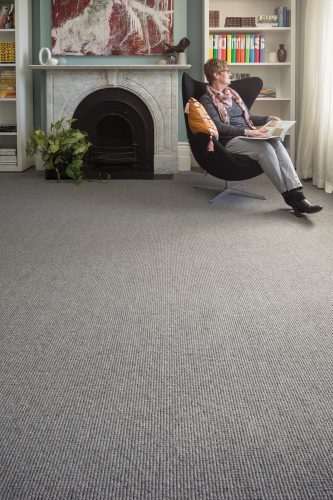
Carpet Selection: Things You Must Know
Carpet dealers usually carry samples of many carpet lines from multiple mills and manufacturers in their showrooms. You’ll see a range of quality when you begin your carpet search. Your best bet is to educate yourself and research your options before you head to the store. Then, you’re sure to get a quality carpet that provides comfort, durability and beauty far into the future.
What You Should Know:
By asking these questions, the dealer is trying to gauge which grade and style of carpet would work best for your home.
How much use will the room get? (This is a consideration because a heavily used room may not be the best place to install white or very light-colored carpet.)
Are kids going to be playing down on the floor? Or is it a formal room that doesn’t get much use? (Again, lighter colors my create more maintenance but another factor the dealer is trying to consider is whether you should choose carpet made with BCF fiber like STAINMASTER® so that children playing on the floor will not find themselves covered in loose fibers shed from staple products.)
What You Should Know:
You should always remember to bring swatches of fabric from drapes and furniture, wallpaper samples, and paint chips with you when you are selecting carpet. That way you can consider a range of colors that will match your existing décor. Remember that color can also affect your mood. Warmer colors often make you feel energized while cooler tones provide a sense of calm.
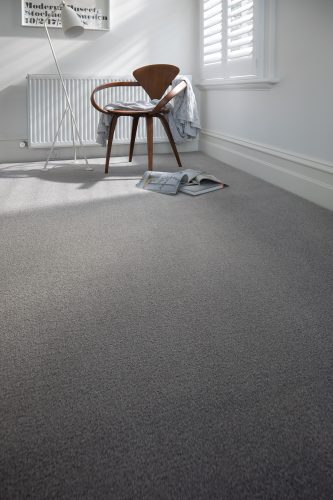
Wall-to-Wall Carpet Buying Guide
On the Carpet
Buying the right type of carpet for a room in your home involves more than finding a style in the color you like. You first will need to consider your lifestyle—what you typically do in that room—location, material, construction, and upkeep. Carpet manufacturers have responded to homeowners’ desire for great looks, value, and easy maintenance with many innovations and options in recent years.
Selection
When shopping, think function first
Fiber Facts
The type of fiber used determines the basic performance and appearance of the carpet. The biggest trend today is: soft. Homeowners seek comfort, and carpet offers a cushion underfoot. It also suppresses noise. The fiber content is usually listed on a specification sheet on the back of the sample. While names may differ among manufacturers, products still fall within one of five basic categories.
Wool
Wool, the granddaddy of all soft floorcoverings, retains its legacy of luxury. Natural and made from woven construction, it offers a greater range of designs, detail, and color than a traditional tufted carpet. Expect good stain resistance as long as you treat it as soon as something is dropped on it. It also has inherent flame retardant characteristics.
Nylon
Nylon comes a close second to wool in terms of performance and feel, but on average it costs less. This versatile fiber offers plenty of variety in styles and construction: frieze, textured, shag, loop cut loop (LCL) all can be made from nylon. It has excellent soil resistance, colorfastness and resilience, which allows it to bounce back, making it a suitable just about anywhere. Some of it can be recycled once into another nylon carpet if the manufacturer so chooses.
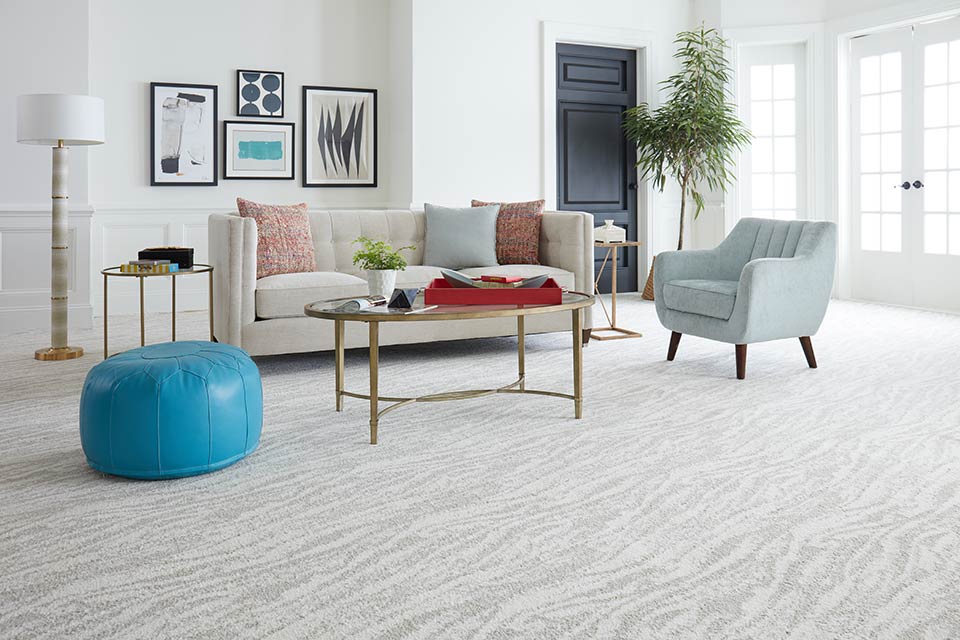
Selecting the Right Carpet
From the Store to Your Floor
You’ve decided that carpet is the best flooring choice for your home. Now what? There’s a lot to consider and many great options from which to choose. Today’s carpet offers a wide variety of choices in style, fiber composition, and color.
A Rainbow of Choices
If a room is your interior design canvas, carpet is your paintbrush. It can be neutral, complementing the other visual elements in the room. It can also be a bold, focal point of the room. Because carpet comes in nearly every color imaginable, the choice is yours
Types of Carpet
Carpet is constructed in several different ways, along with a variety of fibers. Understanding the strengths and differences of each will help you make the right choices for your lifestyle, home, and budget.
Cut Pile: One of the most popular constructions, cut pile achieves its durability through the type of fiber used, density of tufts, and the amount of twist in the yarn. Highly twisted yarn will hold its shape longer, making it a smart choice for high-traffic areas.
Textured Plush – Decorative and versatile. Textured surfaces help hide footprints and vacuum marks. Add causal beauty to any room. The preferred style for busy households. A great carpet for the entire home.
Saxony – Refined surface. Works well with traditional interiors. Ideal for living and dining rooms.
Friezé – Forms a “curly” textured surface because yarns are extremely twisted. Has an informal look. Helps minimize footprints and vacuum marks.
Plush (Velvet) – Dense, luxurious feel. Shows footprints and vacuum marks easily. Best for low traffic areas and formal rooms.
Loop Pile: Here loops are the same height, creating a uniform look. This style generally lasts a long time in high-traffic areas. Many of today’s popular Berber styles are level loop styles with flecks of a darker color on a lighter background.